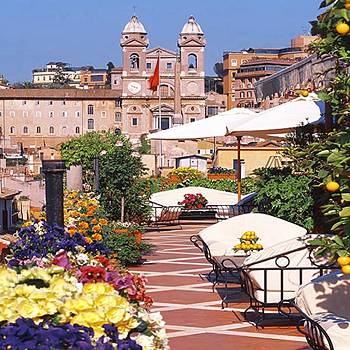The 7 Wonders of the World
By Hoda Nassef
I recently read that some silly organization (American) is trying to comprise a ‘new’ list of ‘Seven Wonders of the World’ – probably taking into account that most of the Ancient 7 Wonders no longer exists. As usual, people tend to try to change history, one way or another, to suit their social, cultural or even political needs! Anyway, there exists or used to exist only Seven Wonders of the World, whether we like it or not! However, there are minor ‘other’ ancient wonders, probably more recent, such as the Great Wall of China and many other formidable man-made constructions, but the original list consists of the most ancient man-made wonders.
The list of the Seven Wonders of the Ancient World was originally compiled around the second century BC, although Herodotus wrote about the idea as long ago as the 5th century BC. The final list of the Seven Wonders was compiled during the Middle Ages. The list comprised the seven most impressive monuments of the Ancient World, some of which barely survived to the Middle Ages. I am proud to mention that two out of the seven, were in Egypt; one (the Pharos lighthouse, which no longer exists)…and the other; the Pyramids, which are still a wonder and still exist. However, if we look at the monuments in Luxor, Aswan and elsewhere in Egypt, I would suggest more than two!
1) The Great Pyramids of Giza
The Great Pyramid of Khufu (Cheops) was built by the Egyptian pharaoh Khufu of the Fourth Dynasty around the year 2560 BC. The structure consists of approximately 2 million blocks of stone, each weighing more than two tons. When it was built, the Great pyramid was 481 ft high. It ranked as the tallest structure on Earth for more than 43 centuries. It is the oldest and only surviving 'wonder'.
2) Hanging Gardens of Babylon
Terraced gardens adjoining Nebuchadnezzar's palace said to rise from 75-300 feet. Supposedly built by the king about 600 BC to please his wife, a princess from the mountains, but they are also asssociated with the Assyrian Queen Semiramis. Most descriptions of the Gardens come from Greek historians, but Babylonian records stay silent on the matter.
3) Statue of Zeus at Olympia
Carved by Phidias, the 40-foot statue marked the site of the original Olympic games in the 400s BC. It was constructed of ivory and gold, and showed Zeus on his throne. It was regarded as the greatest work in Greek sculpture. Today nothing remains at the site of the old temple except the foundation of the buildings, and fallen columns.
4) Temple of Artemis at Ephesus
Constructed of parian marble and more than 400 feet long with over 100 columns 60 ft high, it was begun about 550 BC and took some 120 years to build. It was decorated with bronze statues sculpted by the most skilled artists of their time: Phidias, Polycleitus, Kresilas, and Phradmon. In 356 BC a man named Herostratus burned the temple to ground in an attempt to immortalize his name.
5) Mausoleum at Halicarnassus
Erected by Queen Artemisia in memory of her husband King Mausolus of Caria (in Asia Minor), who died 353 BC. It stood 140 feet high. The beauty of the Mausoleum is not only in the structure itself, but in the decorations and statues that adorned the outside at different levels on the podium and the roof. All that remains are a few pieces in the British Museum and the word 'mausoleum' in the English language.
6) Colossus of Rhodes
Gigantic bronze statue of the sun god Helios (or Apollo); it stood about 117 feet high, dominating the harbour entrance at Rhodes. The sculptor Chares supposedly laboured for 12 years before he completed it in 282 BC. It was destroyed by an earthquake about 226 BC. It has long been believed that the Colossus stood in front of the harbor straddling its entrance. That is improbable and recent studies suggest that it was erected on the eastern embankment of the harbor.)
7) Pharos of Alexandria
Marble lighthouse and watchtower built about 270 BC on the island of Pharos in Alexandria's harbour. Possibly standing 400 feet high, it had, at the top stage, a mirror which reflected sunlight during the day while fire was used during the night. Its reflection could be seen more than 35 miles off-shore. Of the six vanished Wonders, the Lighthouse of Alexandria was the last to disappear. It was destroyed by an earthquake in 1375.
Pharos at Alexandria
(One of the Seven Wonders of the World)
“Sostratus, the son of Dexiphanes, the Cnidian, dedicated this to the Saviour Gods, on behalf of those who sail the seas.”Dedicatory inscription on Pharos Lighthouse of Alexandria.
Almost everyone has heard of Pharos at Alexandria – one of the Seven Wonders of the World. There is no question about its existence, but we are still not entirely sure of the years when it was built. The best estimate is that it was constructed sometime after the death of Alexander the Great in 323 BC. Its great size would have meant that it took possibly twenty years to construct. It is fairly certain to have been completed by 270 BC. The city of Alexandria was still new when the building of Pharos began. The death of Alexander the Great gave Emperor Ptolemy a new financial, as well as political freedom. Released from the obligation to send taxes to Byzantium, he embarked upon a spending spree, expanding his new city with vigour. He decided upon a massive new project to build a lighthouse and commissioned an architect called Sostratus to design it. The lighthouse was to be built on an island in the Bay of Alexandria and linked to the shore by a narrow isthmus.
Whether the lighthouse was called Pharos because of the name of the island on which it was built, or whether the name of the island arose because of the Pharos being built there is not knowen for sure. Pharos was the Greek word for lighthouse, but we have no precise knowledge of its entry into the language. Lightstructures had been in existence for a thousand years so, at the time of the building of the Pharos, the existing Greek word was applied to it and the island on which it stood. Meaning of a practical use in addition to its architectural elegance Pharos - The Lighthouse of Alexandria: For sailors, it ensured a safe return to the Great Harbor. For architects, it meant even more: it was the tallest building on Earth (117m). And for scientists, it was the mysterious mirror that fascinated them most. The mirror which reflection could be seen more than 50 km off-shore.
I am proud to be an Egyptian, where at least two of the man-made Wonders exist. At the time of making out the so-called 'list' of the Seven Wonders of the World, most probably nobody had yet discovered Luxor, where many more fantastic man-made monuments were built.
H.N.



























































































































